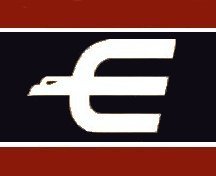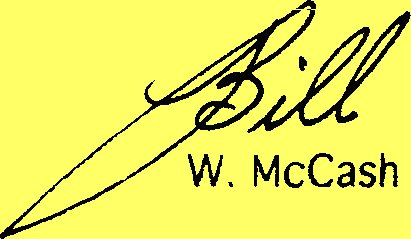|
Longest Commercial
Flight in a Britannia (To My Knowledge)
By Captain Bill McCash,AFM,AE |
|
Captain Bill McCash, AFM, AE - Deputy
Fleet Captain, Britannias. Ascension Island is in (on) the Mid-Atlantic ridge, some 1400 nm south of Dakar, in Senegal, and was/is at an ideal position, from which to monitor Russian satellites. It was also on the flight path for the American space shots. Because of this, Britain and America had established listening and monitoring stations on the Island. The facilities were a bit primitive; the accommodation was in dormitories in Nissen-type huts like some of the RAF stations I was based at. There was one place to eat, a large cafeteria which was open 24 hours a day and we could have anything we wished at any time. The food was top-class. The civilians employed on the island were experts in their field. There was one general store/post office only and no other shops. The trip was a Charter from the top radio & radar Companies which were involved there and only very senior people - directors and the like - were to travel. It was a very VIP load and the Company laid on plenty of high-class catering and drinks. From memory, we had 65 passengers, all men, and some freight. The 2 days we were scheduled to spend on the Island were to coincide with an American space shot due to leave Cape Canaveral (now Cape Kennedy) and the passengers were to see their equipment in action. F/O. John Barber was due to do his final Captain's Route Check before being promoted so this was a good flight for that. The Navigator was Reg Peake and the Flight Engineer was Reg Rowles. I can't recall the cabin staff but they were all very experienced. We were due to leave on the morning of the 16th February but, again from memory, there was a delay. I think I am correct in saying this was the time that the space ship blew up on the ground, killing everyone on board. There was much discussion about whether it was worth continuing but they decided they might as well go and see the set-up in any case. So we got off at 1600 GMT for Dakar, landing there 8 hrs, 30 mins later. It was then a 5 hour flight to Ascension and we arrived there at 0710 GMT on the 17th. I wondered if we could try a direct flight back. I discussed it with the crew and they were all in favour - in Eagle we always tried to save money - so the plan was to Flight Plan to an airfield in Spain, then Re-file to another one further north and so on. If things got tight we had dozens of airfields we could have landed at. The normal procedure for the cabin staff was to have only the first leg catering on board and the rest in the hold. I told them to get all the catering in the cabin which they did. With only 65 passengers - and with some of the forward seats having been removed for the Ascension freight - we were well under Maximum Take-off Weight even with full tanks. The weather was forecast to be good and there were no airfields en route with bad landing forecasts. On 20th February we taxied out at 0755 GMT, heading (from memory) for Seville in Spain with Dinard in France as Alternate. After take-off we came back to climb power as usual. The normal climb power uses 920 propeller RPM and this comes back to 860 in the cruise. I told Reg to come back to 860 as soon as we were established in the climb and it made no noticeable difference to the rate of climb. John Barber just kept climbing and I
kept asking Air Traffic for higher altitudes. There was hardly any other
traffic in the area so that was no problem. Finally we leveled out at
Flight Level 330 - 33,000 feet. Up there you could hardly see the fuel
flowmeters moving. When we contacted Casablanca they queried what our
aircraft type was as they only handled pure jets. We Re-filed for Dinard
with Heathrow as Alternate and as we got nearer John and the two Reg's
said we had enough fuel for Heathrow with Gatwick as Alternate. So we
Re-filed. Air Traffic Control in Spain, then France then London must have realised what we were doing as they pulled out all the stops to help. Heathrow was at the quiet time and we got straight in. We shut down at 2050 GMT. Some of the passengers were interviewed
by the Press and the next morning it was in the papers, including that
"Ascension Island was only one sector away."
|


